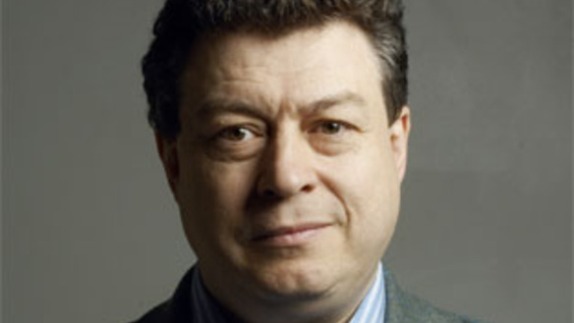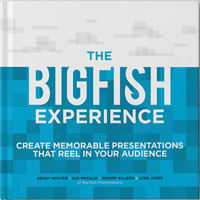Rory Sutherland: “Perspective is Everything”
This week’s presentation breakdown features brand specialist Rory Sutherland. “Rory Sutherland stands at the center of an advertising revolution in brand identities, designing cutting-edge, interactive campaigns that blur the line between ad and entertainment.” (TED.com) We take a look at his newest TED talk as he delves into the realm of perspective, applying psychological solutions to economical and technological problems. Take a gander, and let us know what you think in the comments below or via Twitter or Facebook as well! Enjoy!
Rory Sutherland
Perspective is Everything
0:00-1:25 – Begins presentation with a personal insight about smoking
- Sutherland’s insights on smoking bans in bars give the audience an immediate sense of where he stands as well as the tone of his perspective. By giving the audience a solid tone, which includes humor, we are more readily primed for receiving his insights to come.
1:25-1:49 – Transitions from the joke into a broad message
- He has the audience laughing, which is a great way to get them listening. Once he has them listening, he introduces his first real concept: “The power of re-framing things cannot be overstated.” Now, after having heard a humorous example of the concept and then a brief summary of the concept, we are ready to dive into the subject at hand.
1:49-2:56 – Delves further into the concept by giving an example
- Moving on, Sutherland continues to address the concept, but instead of speaking in generalities, he gives an example, in this case it is about the framing of unemployment in England. As we all know, using an example is a useful tool in explaining a concept, but it is also an effective Segway from summary to breakdown.
2:56-3:12 –Breaks down his previously mentioned concept with a basic informational slide
- Here is the breakdown we were expecting. The unique thing about this breakdown is that Sutherland keeps it very brief and doesn’t overburden his audience with an in-depth look just yet. We can take a guess and assume that he will refer back to this slide once he sprinkles in a few more examples.
3:12-3:54 – Gives another example of his concept by explaining an experiment
- We are returning to an example. This time, Sutherland explains a brief, clear experiment that proves his point. We are given a scenario that reinforces an ideal. This further solidifies our understanding of Sutherland’s concept, which keeps us interested and curious for more.
3:54-5:05 – Addresses another principle, then follows-up with an insight that relates to the principle
- “The circumstances of our lives may actually matter less to our happiness than the sense of control we feel over our lives.” This is a new principle, but it does relate to the previous one in a sense. Humans perceive happiness based on the amount control they have over their circumstances. We’re back to the idea of perspective. After giving a brief, real-world application, we can begin to see how Sutherland is blending multiple angles in order to shed light on a bigger issue. A great presenter slowly and carefully builds up his case with examples and smaller concepts in order to fully enrich and entertain an audience.
5:05-6:23 – Enters a deeper discussion concerning psychology as it relates to economics and technology
- As Sutherland continues to unfold his ideas, he makes the shift into a deeper discussion about perspective in the realm of psychology. As an audience, we begin to gain a greater understanding of the big picture, so to speak.
6:23-7:20 – Gives yet another example of the previously stated concept (psychological solutions to technical and economical problems)
- Sutherland continues to create an easily understandable path for the audience by weaving examples and numerical values with his broader concepts. Sutherland’s idea of merging Psychology with traditional practical solutions is showcased through the Eurostar example in an engaging, slightly humorous way that informs and entertains the audience.
7:20-8:02 – Segways from the example into yet another concept
- Sutherland has given us a grasp of what psychology can do for practical solutions. Now, he is shifting into what this idea means in terms of the psychological and creative practitioner’s role in the traditional forms of problem solving. He proposes the notion that creative people have been labeled inferior to the logic-based ideas of technologically-minded and economically-minded people. There is asymmetry. This shift of concept is key in terms of explaining Sutherland’s overarching idea.
8:02-9:22 – Reinforces the previously stated concept with two examples
- Sutherland is the king of examples. As he explains the concept of psychological solutions, he addresses case studies that support his claim, explaining why they work and how they relate to perspective/psychology.
9:22-10:53 – Refers to a diagram that explains the “Sweet Spot” between Psychology, Technology and Economics, then provides two examples
- Sutherland uses a visual to enhance the audience’s understanding of the concept of the “Sweet Spot.” It’s important to remember the power of visuals in your presentation. If Sutherland had merely stated his concept, it would become muddled with the rest of his words. However, by using visuals he has given his audience a reference point and a distinct symbol that will make more of an impression in their memories. Also, Sutherland’s concept of the “Sweet Spot” becomes further developed, and therefore understood more clearly, by his use of examples (Google and television sets).
10:53-11:19 – Proposes a psychological solution to a medical problem
- Even though Sutherland has given examples of possible solutions to an array of problems, in this solution, Sutherland has addressed another realm of problems: the medical field. By giving a diverse range of problems and solutions, Sutherland has built credibility for his proposed idea. Throughout the presentation, we have seen Sutherland’s knack for introducing, explaining and reinforcing concepts. Keep in mind that a consistent and thorough discussion of any topic establishes and reinforces your credibility as a speaker and a source of information.
11:19-13:12 – Discusses the psychological forces behind economic choices
- Sutherland explains that money isn’t just money. People’s payments are influenced by where the money goes. Sutherland is slightly shifting the direction of his presentation by speaking increasingly of real-world changes. This is the first step to calling the audience to action, which is a crucial factor in a great presentation. He proposes that this mode of thinking could radically alter the current approaches of economics, medicine, technology, etc.
13:12-18:25 – Concludes the presentation by funneling the broad concept of perspective into an analogy, then explains the analogy in terms of the “big picture”
- Sutherland has touched on many, many things throughout the course of this presentation. Now, in the last five minutes, he is condensing his previous mass of concepts, theories, explanations, examples, studies and exercises into a single analogy made by Dr. Ludwig von Mises. The analogy is very effective, especially at this point in the presentation because it makes use of everything Sutherland has addressed thus far. We have seen how psychological solutions to a variety of everyday problems can impact certain situations. We have seen how perception is vital to the condition of society. Now, we are seeing all of these elements come together in this specific analogy. Sutherland is using his previously established credibility to launch us into further thought. He ends this talk by opening our eyes to the larger concept at work, here. We can actively participate in this analogy because he has given us the tools to do so. Having learned and participated, we can now take action, whether literally or mentally, and that was Sutherland’s main objective.
Society has established rules and ideologies based on pure logic and straightforward strategies. If we applied the principles of Psychology to Economics and Technology, we could radically alter the way we perceive situations and ultimately solve problems more effectively. Perception can be applied to a variety of social, economical and technological issues in order to increase their efficiency, accuracy and structure.
Rory Sutherland uses a plethora of smaller concepts, explanations and examples to establish a foundation for his overarching discussion of perception. By building upon easily digestable blocks of information, the audience is able to gather and understand more readily the concepts presented.
Like this post? Subscribe to this blog to keep up to date with awesome presentation strategies and ideas.





Share your opinion.